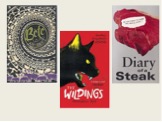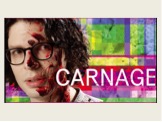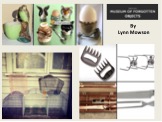Creating present futures for non-human animals: Vegan heterotopia as pathways to “the best of all possible worlds”
Dr. Paula Arcari
In a response to media conceptions of nature during Covid, social scientists Nik Taylor and Heather Fraser said it is important to keep imagining a different world in terms of other animals’ relations with us, because a radical imagination can help sow the seeds of change. Visions of worlds devoid of hierarchies and binaries have always, implicitly or explicitly, been at the heart of justice movements and of individual acts of resistance. The posthuman, postcolonial, postgender, post-anthropocentric and other post-turns refer explicitly to such visions – to relations and ways of being in the world that disrupt or reject the dominant order, placing it somewhere in a future past. Heterotopias enact a similar contestation of the present and realisation of alternatives. Foucault (1967) conceives them as ‘counter-sites’ that at once represent, contest, and invert the society they’re part of.
Such endeavours are the core of critical animal studies (CAS). Indeed, CAS can itself be viewed as a heterotopia within the academic landscape – a counter-site that, after Foucault (1989), destroys syntax, desiccates speech, stops words in their tracks, and dissolves myths. But in shattering orders and destroying myths – within the virtual fractures this creates – heterotopias are also attentive to actualizing concrete spaces of freedom, of possible transformation. Foucault (1994) describes this as “following lines of fragility” – seeking “to grasp why and how that which is might no longer be that which is”(449-450).
CAS scholars are continuously engaged with the task of social transformation – of radical imagining and re-ordering for alternate animal futures. Sue MacDonald and Will Kymlicka’s vision of animal citizens and sovereigns, Yamini Narayanan and Sumanth Bindumadhav’s call for a posthuman cosmopolitanism, the speculative multispecies worlding of Michelle Westerlaken, Joan Dunayer’s framework for non-speciesist law, and Patricia MacCormack’s Ahuman Manifesto to name just a few. The practical considerations are challenging and there are no easy resolutions, as Marc Bekoff demonstrates in his struggle to articulate “the best of all possible worlds”(2013: 21).
Alternate or deviant ways of thinking, living, and relating are presented to us in any numbers of ways – through art, activism, literature, visual media, scholarship, an event, or an encounter. For Anthony Dunne and Fiona Raby (citing Clark), the role of speculation is to “unsettle the present rather than predict the future” (2013: 88). From this perspective, concerns regarding how the tension between the real and the ideal should best be approached in the interests of social change largely dissipate because, drawing on Donna Haraway and Karen Barad, we cannot ultimately know which patterns of diffraction will make the difference.
Whether understood as utopian thinking, situated speculation, radical imagination, counter-conduct, critical subversion, radical resignification, prefiguration or many other terminologies, any ‘happening’ that unsettles the present enacts a speculative ripple. However, this doesn’t excuse the need for critical reflection on the intentions and effects of this unsettling. As Michael Halewood (2017) writes, speculation always emerges from and is immersed in the world. In this respect, commitments to being critical, radical, and transformative should be central. We must, Halewood continues, “stay faithful to this ground, to what enables us to jump, to speculate, at the very moment that we make our jump. We must also consider where we are going to land” (58).
Subversive spaces and practices involving nonhuman animals are plentiful and thankfully spreading. They can be see not only in relation to veganism’s rejection of dominant practices, but in situated practices that actively model alternate relations – that in effect flip the script on how different categories of nonhuman animals are commonly understood. These subversions are often subtle – gentle ripples as opposed to waves.
For example, in 2014, a local Melbourne newspaper told the story of a man who for 14 years had fought against council regulations relating to ‘livestock’ to keep his beloved pet sheep Baa in his suburban backyard. He had cared for her exactly like a dog or cat, including treating the cancer she developed at age 16. When she died a year later, he said of their time together, “I did not expect to have this joy, and I have enjoyed serving this animal … this is true love.”
Baa’s story clearly resonates with Foucault’s notions of order and disorder, and also Mary Douglas on danger, purity, and matter out of place. In keeping Baa as a pet, her human companion defied her designation as ‘livestock’ and built a relationship defined socially, culturally, emotionally, and legally as deviant.
In a similar undoing of their taxonomic designation, many rescuers of battery chickens have them fitted with an implant designed to stop the unnatural rate of egg production that has been genetically hard-wired into them by capitalist commodification. Moving away from ‘food’ animals, the non-ridden equine association has chapters across the UK, Australia, US, Canada, and New Zealand. Instead of being ridden, these horses voluntarily join their companions in hiking, agility, and other bonding activities. Members value their horses for the relationships they develop, not their use. But, they also endure criticism from the broader equestrian community for keeping ‘lawn ornaments’.
More personally, like many others, I have often reflected on my encounters with street dogs in India, Peru, and other places, recognising these as instances of an internal disturbance – an embodied heterotopia. Notwithstanding the precarious and dangerous lives endured by many of these animals, there are also unquestionable expressions of joy, kinship, and above all free will. My understandings of dogs, founded in the practices of Westernised ‘animal-loving’ nations, are unsettled by these independent creatures who are largely ambivalent about the humans around them. They exhibit no fawning body language, no entreaties for contact or food, and more often an aversion to human encounter – a complete subversion of the supremacy of the human in westernised dog relations. I wonder how the precarity of their autonomous lives should be assessed against the confinement, dependence, crushing stability, and predictability endured by many ‘pet’ dogs in the UK and elsewhere.
What emerges from these reflections is that the shift that is radically imagined or enacted in heterotopias is an entirely human adjustment. Animals are already orientated to their own ‘beingness’ – we simply need to join them, conceptually, in these ‘othered’ spaces, which may sometimes require us to physically intervene, but perhaps more often to withdraw.
Of course, it is art, literature, and media that is most equipped to radically bend, contort, and upend our realities, explore new realities, and play with the implications. Steve Cooke writes that art and literature “act as moral educators, revealing truths by making new ways of thinking available and opening up new possibilities” (2017: 15). For example, in literature, xenofiction foregrounds the nonhuman viewpoint, as seen in Adam Roberts’ ‘Bete’, Nilanjana Roy’s The Wildings, and Deborah Levy’s Diary of a Steak which charts the progression of a ‘mind that has been symbolically culled’.

Many readers will likely know of the 2017 mockumentary ‘Carnage’ set in a vegan future world that looks back with incredulity on today’s meat-centred culture.

Taking a similar time-warping approach, Australian artist Lynn Mowson’s ‘Museum of Forgotten Objects’ depicts a future museum displaying an array of objects that have lost their meaning, among them meat claws, bone-handled butcher’s knives, bird cages, and egg cups in the shape of tiger, rabbit, and ferret heads. Visitors are imagined pondering the purpose of these testaments to fossilised practices (Shove and Pantzar 2007).

These are all attempts to unsettle the present, to create present futures, or vegan heterotopias (Arcari 2019), for nonhuman animals. Drawing on Amy Allen, vegan heterotopias hold up a mirror to our forms of life, creating a virtual distance and a concrete space of freedom – of anticipatory illumination. Yet at a time of converging crises, when this illumination is most needed, funding for the arts and humanities is under threat across the world, particularly in the UK, US, and Australia.
As a fast-growing multi- and cross-disciplinary space of critical education and research, CAS is in a key position to continue the radically imaginative work of shattering orders and speculative reworlding. Together with others endeavouring in different ways to challenge anthropocentrism – scholars, advocacy organisations, activists, individuals, and combinations thereof – we can hopefully continue to narrow the gap between our present and ‘the best of all possible worlds’.
Paula is a Leverhulme ECR Fellow located within the Centre for Human Animal Studies at Edge Hill University. Her three-year project ‘The visual consumption of animals: challenging persistent binaries’ aims to support transformational change in the way humans conceive and interact with nature.
References
Allen, A 2015, ‘Emancipation without Utopia: Subjection, modernity, and the normative claims of feminist critical theory’, Hypatia, vol. 30, no. 3, pp. 513-29.
Arcari, P 2019, Making Sense of ‘Food’ Animals: A Critical Exploration of the Persistence of ‘Meat’, Palgrave Macmillan, Singapore.
Bekoff, M 2013, ‘Who lives, who dies, and why? How speciesism undermines compassionate conservation and social justice’, in R Corbey & A Lanjouw (eds), The Politics of Species: Reshaping our Relationships with Other Animals, Cambridge University Press, Cambridge, UK, pp. 15-26.
Cooke, S 2017, ‘Imagined Utopias: Animals Rights and the Moral Imagination’, Journal of Political Philosophy, vol. 25, no. 4, pp. e1-e18.
Donaldson, S & Kymlicka, W 2013, Zoopolis, Oxford University Press, Oxford, UK.
Dunayer, J 2013, ‘The rights of sentient beings Moving beyond old and new speciesism’, in R Corbey & A Lanjouw (eds), The Politics of Species: Reshaping our Relationships with Other Animals, Cambridge University Press, Cambridge, UK, pp. 27-39.
Dunne, A & Raby, F 2013, Speculative Everything: Design, Fiction, and Social Dreaming, MIT Press, Cambridge, MA.
Foucault, M 1967, ‘Of Other Spaces: Utopias and Heterotopias’, Architecture/Mouvement/Continuite, October, pp. 1-9.
Foucault, M 1989, Order of Things: An Archaeology of the human sciences, Routledge, London and New York.
Foucault, M 1994, Aesthetics, Method, and Epistemology: Essential Works of Foucault 1954-1984 Volume 2, The New Press, New York.
Halewood, M 2017, ‘Situated speculation as a constraint on thought’, in A Wilkie, M Savransky & M Rosengarten (eds), Speculative Research: The Lure of Possible Futures, Routledge, Oxon and New York.
MacCormack, P 2020, The Ahuman Manifesto: Activism for the End of the Anthropocene, Bloomsbury Academic, London and New York.
Narayanan, Y & Bindumadhav, S 2019, ‘‘Posthuman cosmopolitanism’ for the Anthropocene in India: Urbanism and human-snake relations in the Kali Yuga’, Geoforum, vol. 106, pp. 402-10.
Shove, E & Pantzar, M 2007, ‘Fossilisation’, Enthnologia Europaea, vol. 35, no. 1-2, pp. 59-62.
Taylor, N & Fraser, H 2020, ‘Radically Imagining Human-Animal Relations after the Covid19 Pandemic’, Animals in Society, <https://animalsinsocietygroup.wordpress.com/2020/04/06/radically-imagining-human-animal-relations-after-the-covid19-pandemic/>.
Westerlaken, M 2021, ‘It matters what designs design designs: speculations on multispecies worlding’, Global Discourse, vol. 11, no. 1-2, pp. 137-55.
